| |
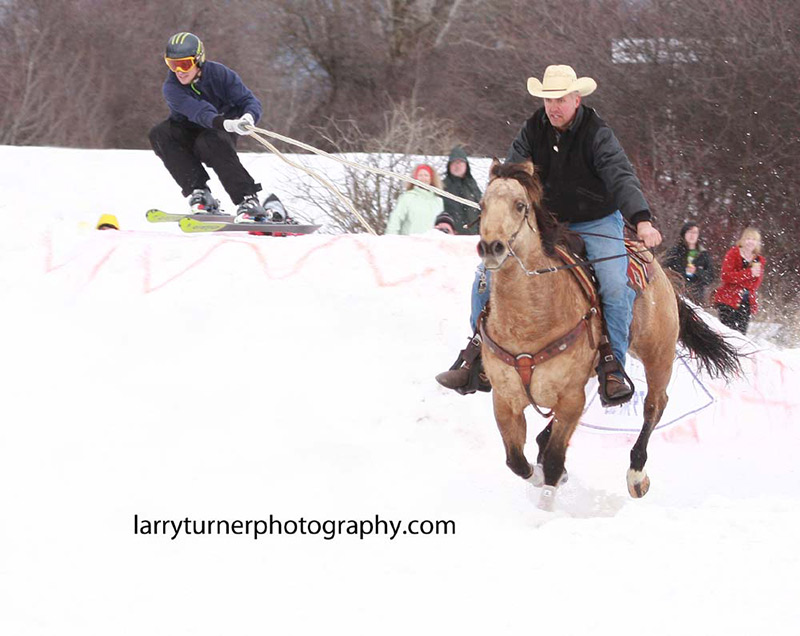 |
|
| |
|
|
| |
Skijoring began hundreds of years ago in the Scandinavian countries as a means of transportation for farmers—whereas a horse would pull a skier—between villages and other locations. Today, it is done for entertainment and competition, including prize money. Last year, the purse was near $20,000, the biggest portion (55 percent) going to the winning open class team. These photos were taken during that event. There are competitors in the beginner and novice classes, as well. Close to 100 teams compete each year during the two-day competition.
A horse, rider and skier run a 900 foot course which includes jumps and other obstacles. The fastest time wins. There is also a competition for the longest distance jump (called Murdoch’s Long Jump), run on a straight course up to a 10 foot jump…similar to track and field’s long jump. However, in skijoring, the horse and rider pull the skier as fast as they can up onto the jump and the horseman maneuvers his or her horse with a quick turn, flinging (really catapulting) the skier—who lets go of the rope while air born and achieves the greatest distance possible. The skier has to land without crashing or they are disqualified. Last year’s winning jump was 56 feet. |
|
| |
|
|
| |
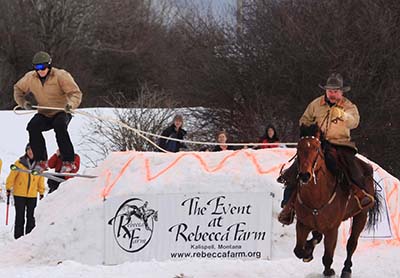 |
|
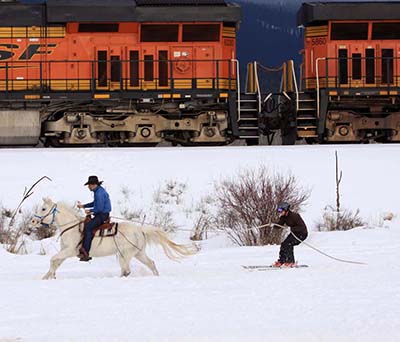 |
|
| |
|
|
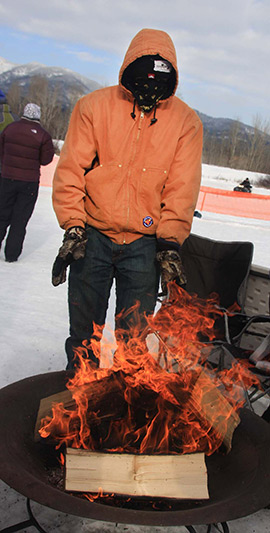 |
|
|
|
| |
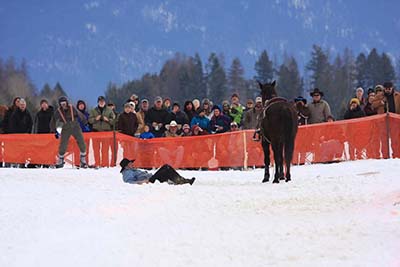 |
|
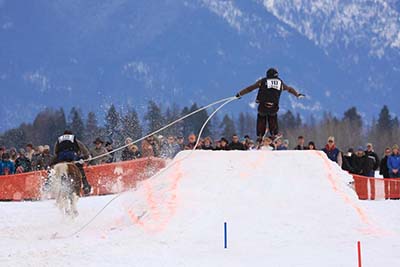 |
|
| |
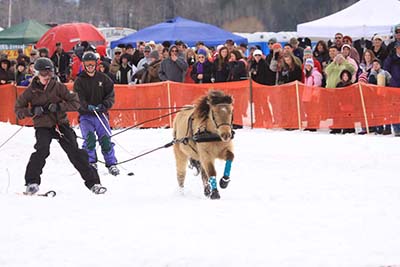 |
|
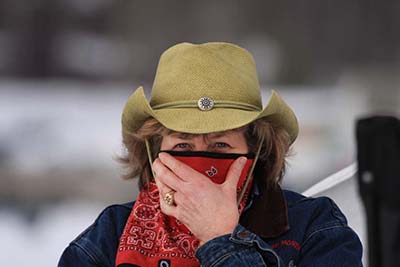 |
|
| |
|
|
| |
WORLD SKIJORING CHAMPIONSHIPS
Whitefish, Montana has the largest equestrian skijoring event in North America. This, the World Skijoring Championships, is thrilling to watch. It is wonderful to see the Western horse tradition meld with the more modern ski culture. Many former members of the US Ski Team have competed in skijoring. In 1928, skijoring, as a demonstration sport, was presented at the Winter Olympics in hopes of getting it established as a competitive venue, but didn’t get enough support.
Skijoring in America started in Leadville, Colorado in 1949.
The event takes place every year around the curve of January into February during Winter Carnival at Whitefish's local airport near the railroad tracks. It used to be in downtown Whitefish, but there were too many buildings and spectators alike that suffered damage by runaway horses and skiers gone awry into fixed structures and human viewers. Open space at the airport proves to be a safer venue. |
|
| |
|
|
| |
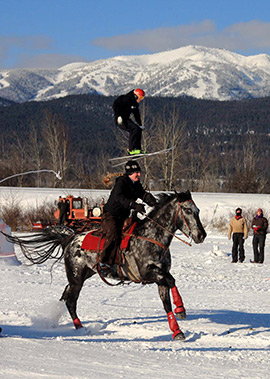
|
|
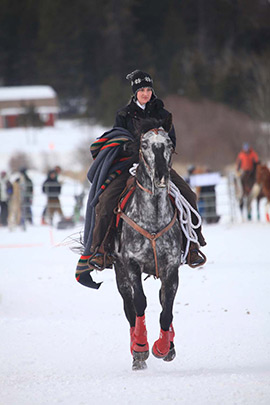 |
|
|
|
| |
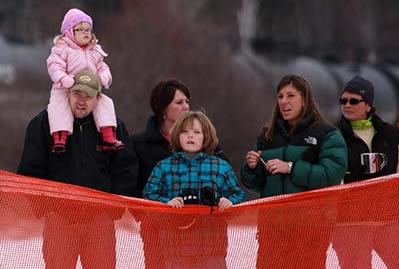 |
|
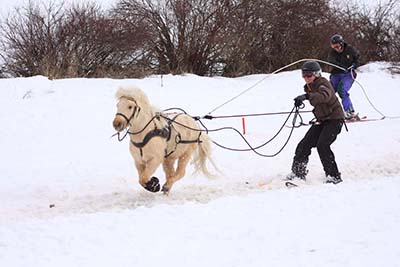 |
|
| |
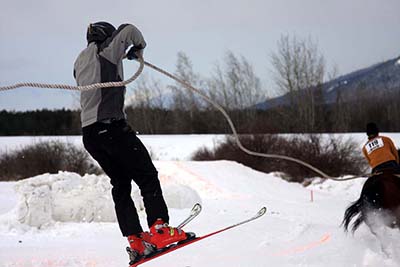 |
|
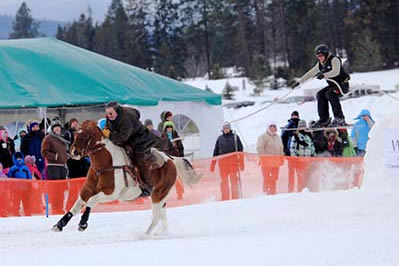 |
|
| |
|
|
| |
SKIJORING GEAR
Short skis are the norm in the event. A single rope is tied around the saddle horn or to the back of a Western saddle and the skier hangs onto the rope—at least, tries to—as the horse (fitted with special snow pad shoes on their four feet) rounds the course. Sometimes, a team will use two towing lines, coming from the back of the saddle or the horse’s breastplate. Timing for the competition is done electronically. The horse and rider run inside the track while the skier runs outside negotiating 4-5 foot jumps. Last year, because of the icy course conditions, one horse fell but was uninjured. It is commonplace to see skiers go down but rare for the surefooted horses.
Skijoring is a great event, enjoyed by fans from the ranch and ski community, and spectators from other walks of life, as well. During milder conditions, Saturday’s kickoff competition last year was packed. Several food vendors provided hail and hearty winter food and the local Whitefish brewery, the Great Northern, had several pours, including their signature Black Lager (it was so cold during Sunday’s competition that my large tin of black lager beer would freeze over and, like an ice fisherman, I would have to poke a hole to get to the black liquid). During brutal riding conditions, several fires are maintained near the course where spectators, riders and skiers can warm up.
It was worth enduring the cold for this exciting event where the unexpected is the expected.
IMPORTANT INFO: www.whitefishskijoring.com, www.nasja.com, www.explorewhitefish.com
WHERE TO STAY: www.whitefishlodge.com, www.grousemountainlodge.com, www.barwguestranch.com |
|
| |
|
|
| |
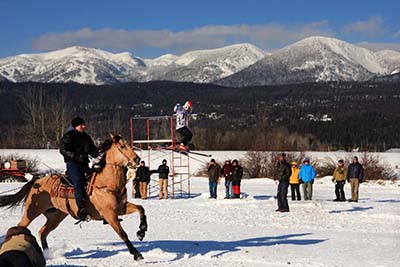 |
|
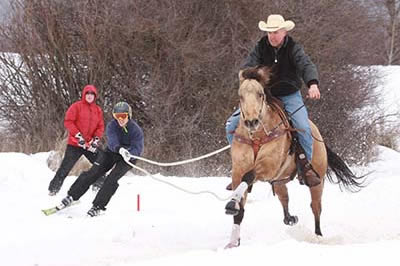 |
|
| |
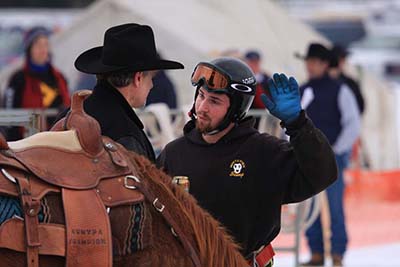 |
|
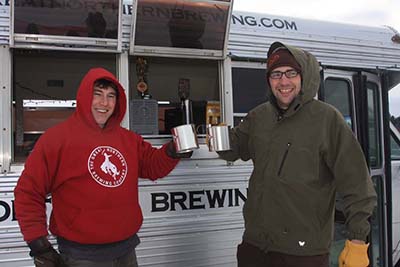 |
|
|
|
|


